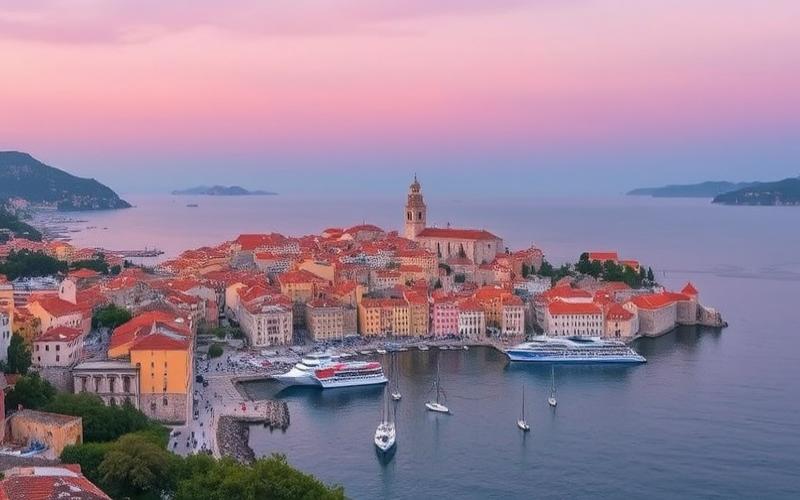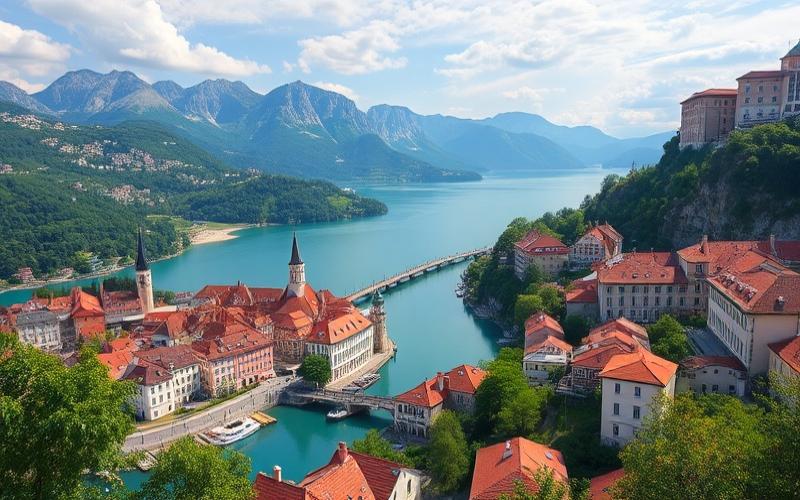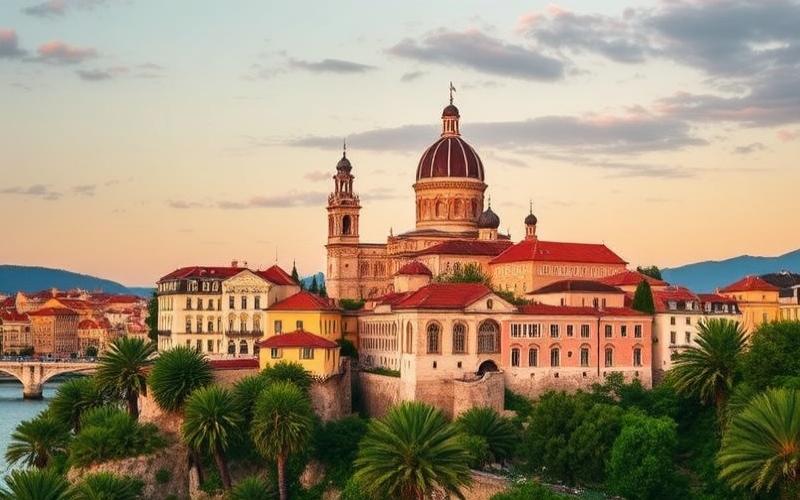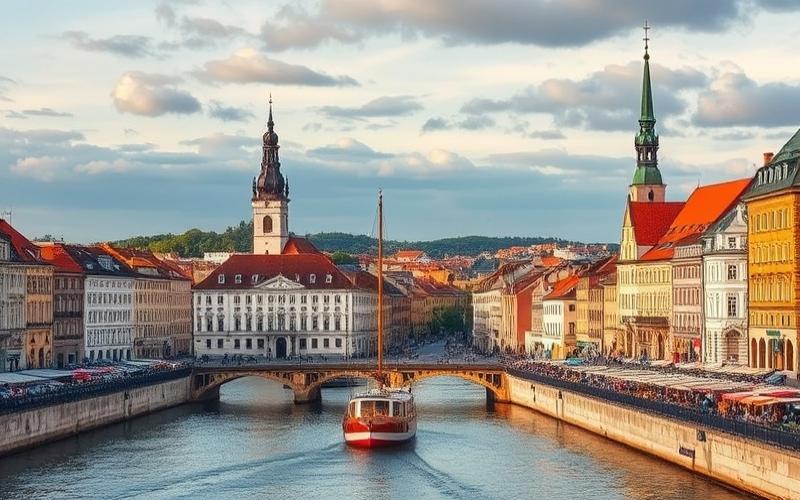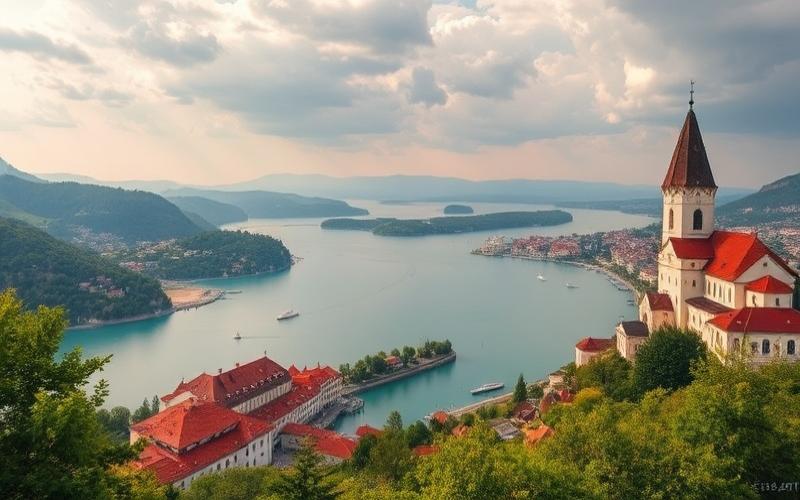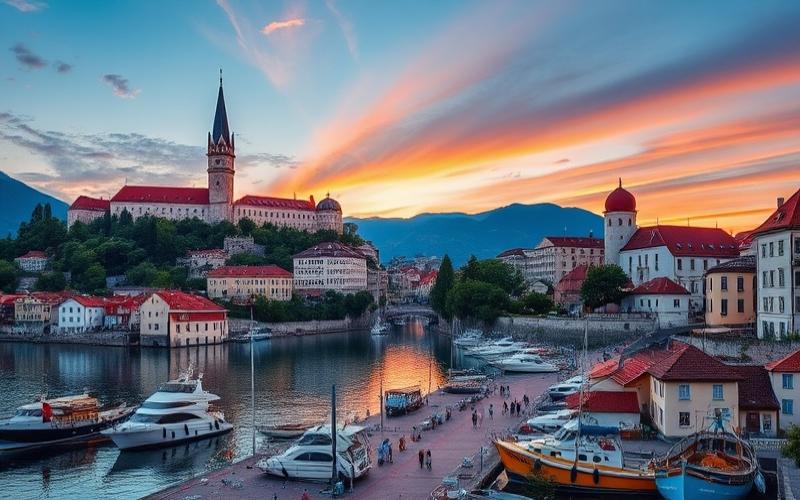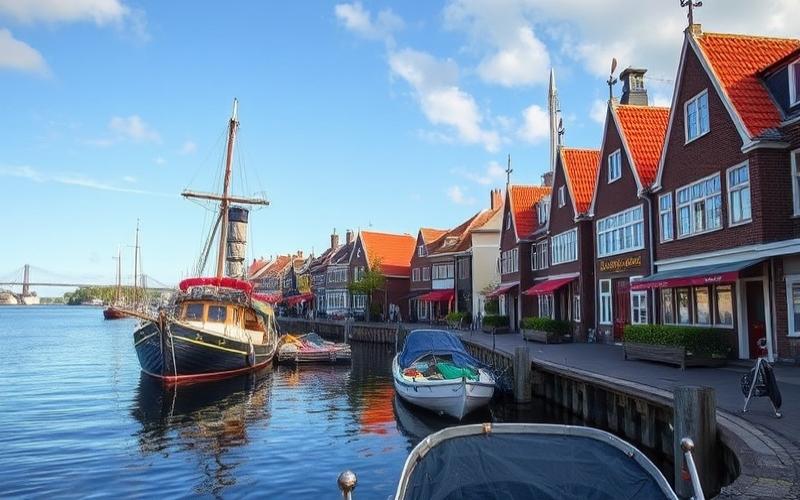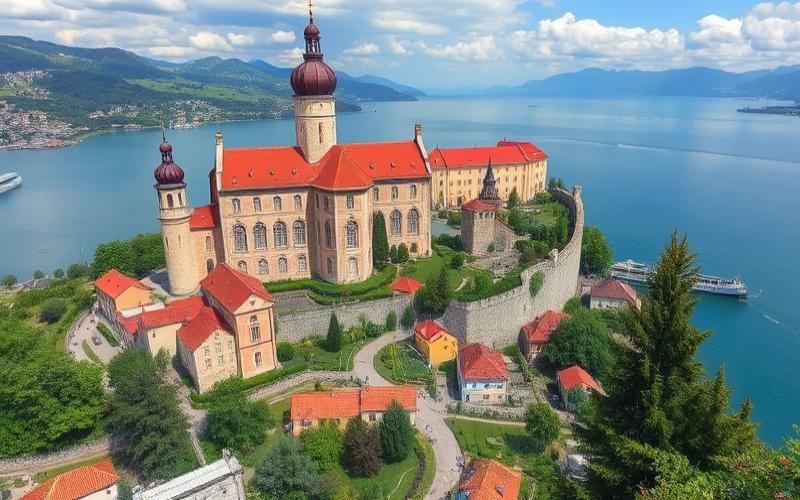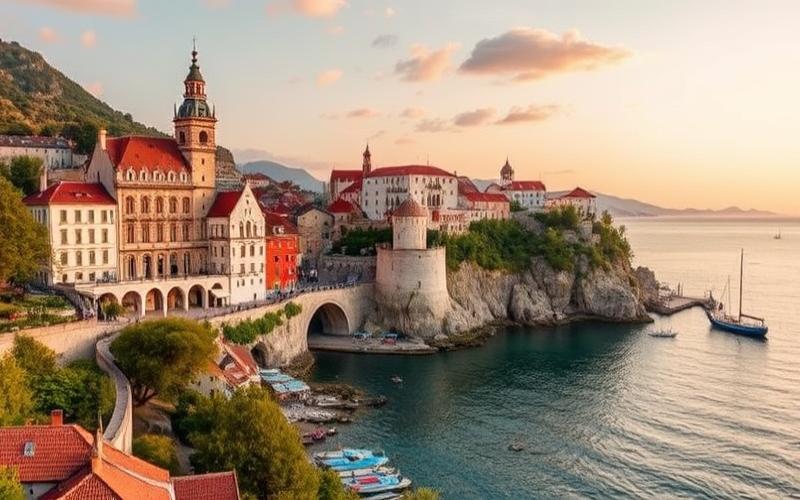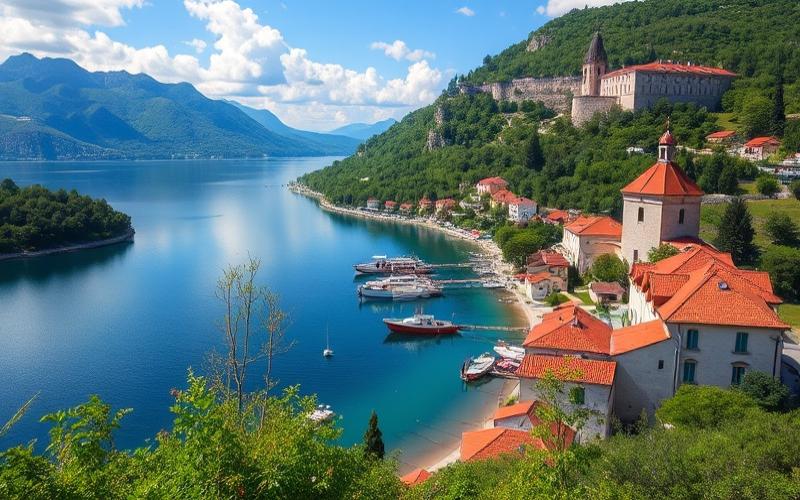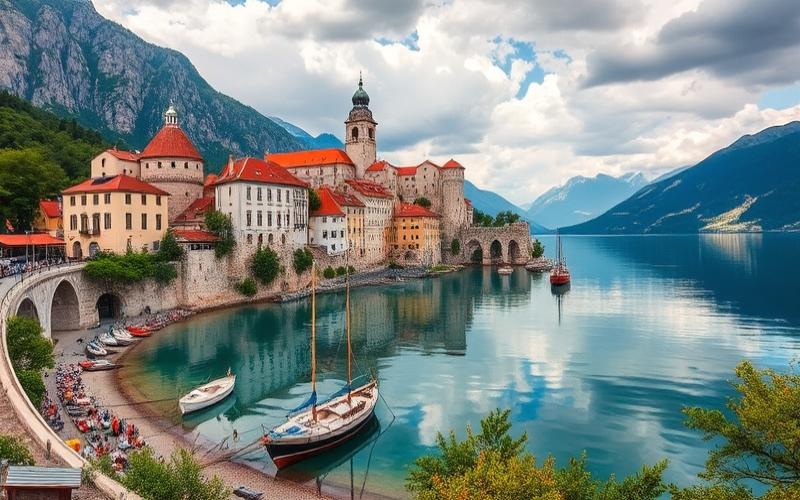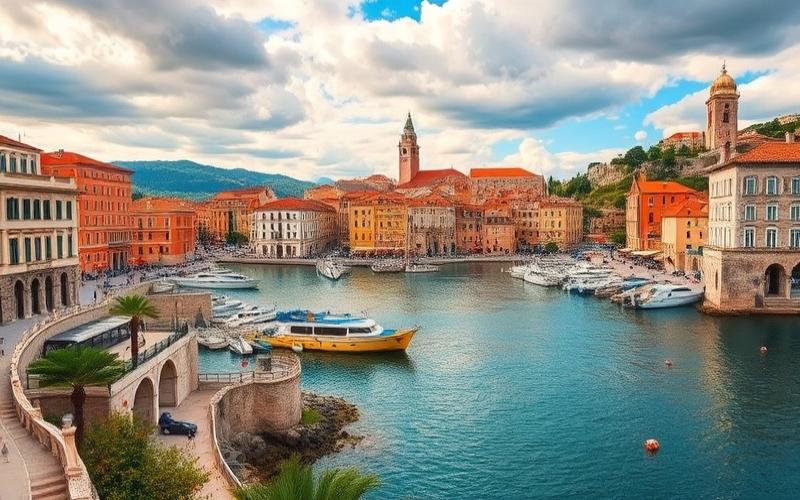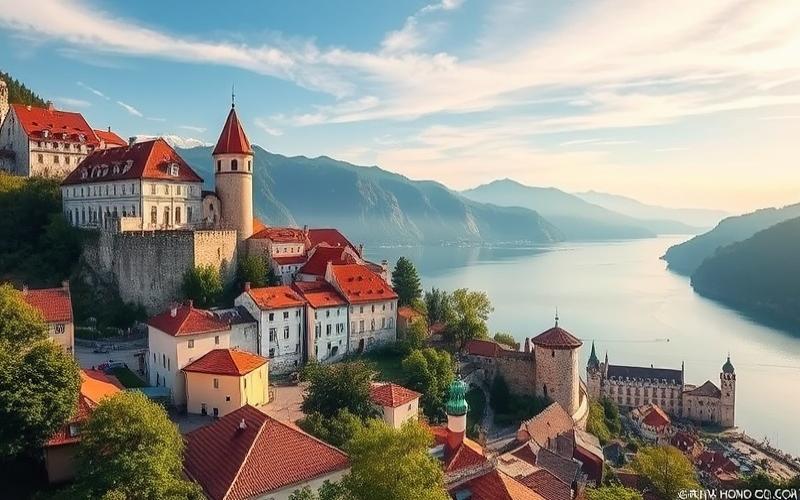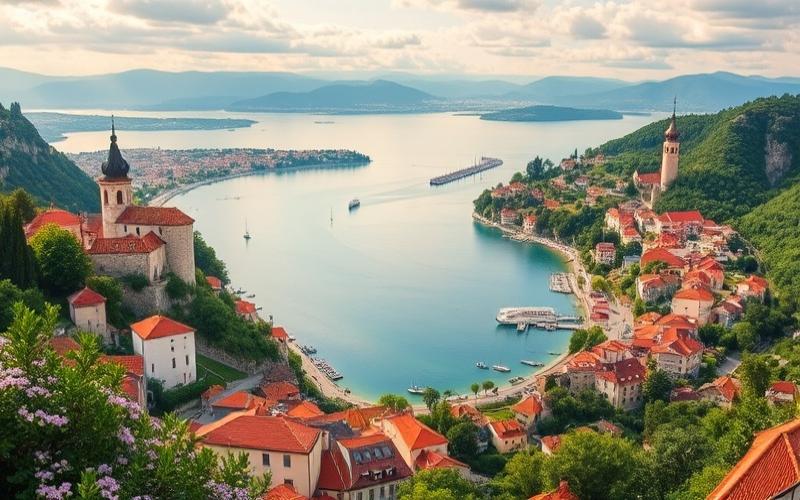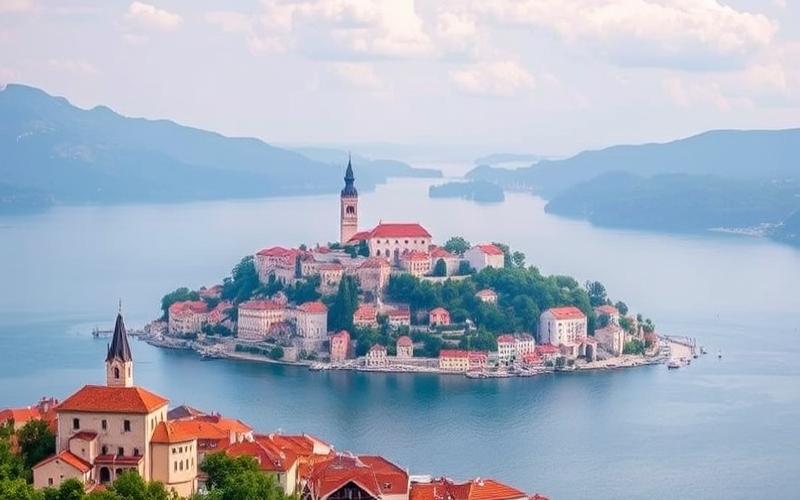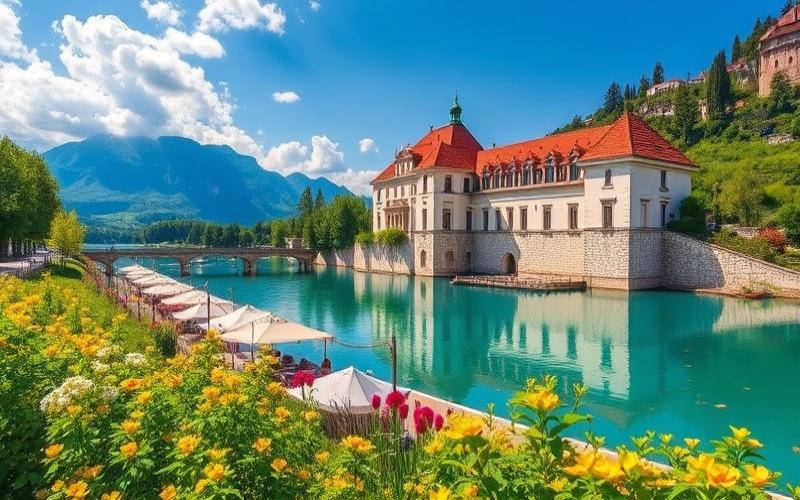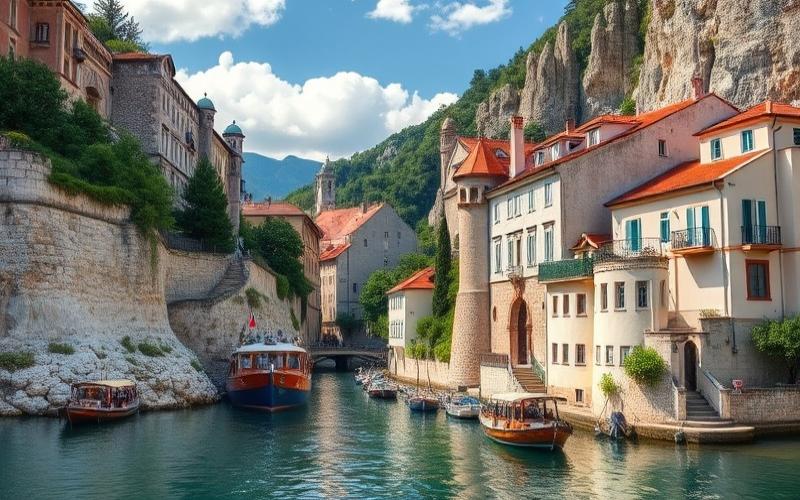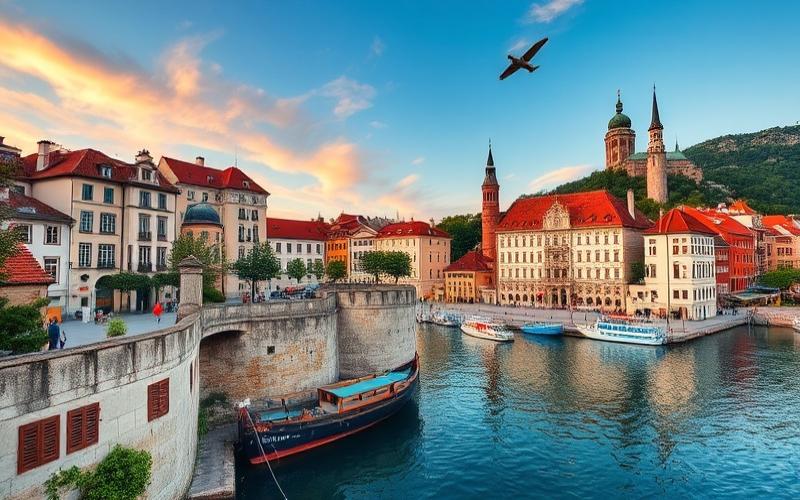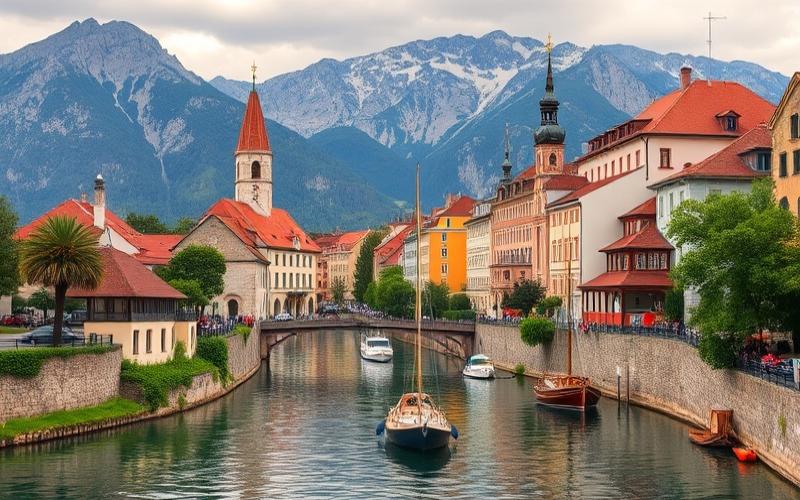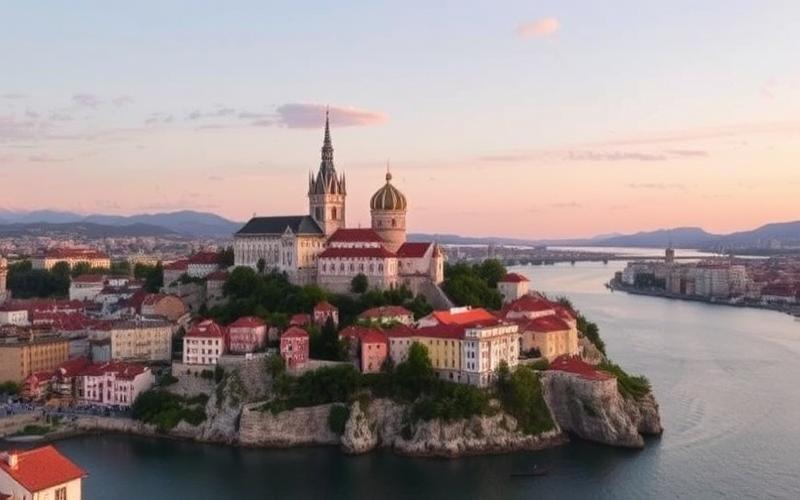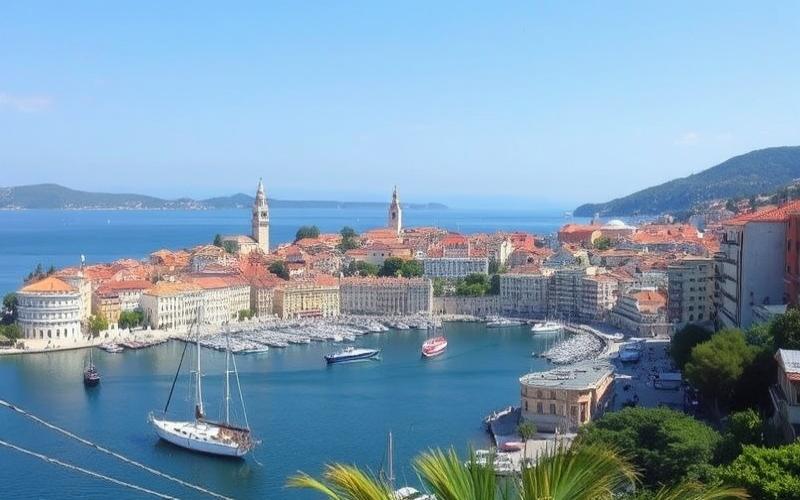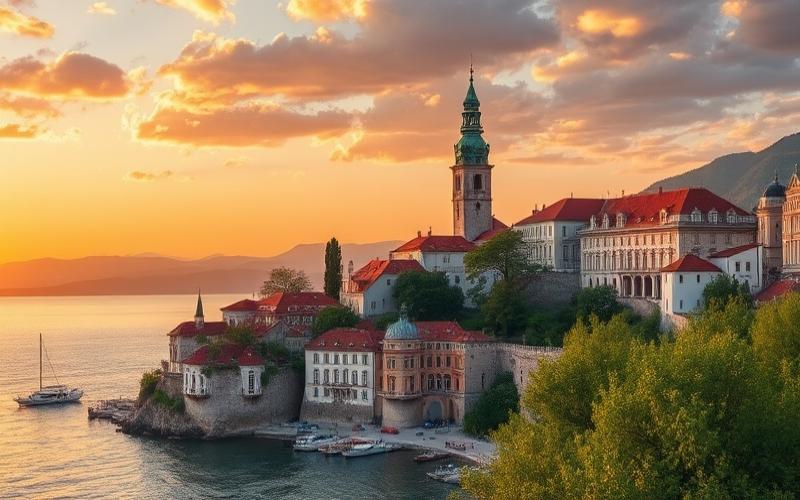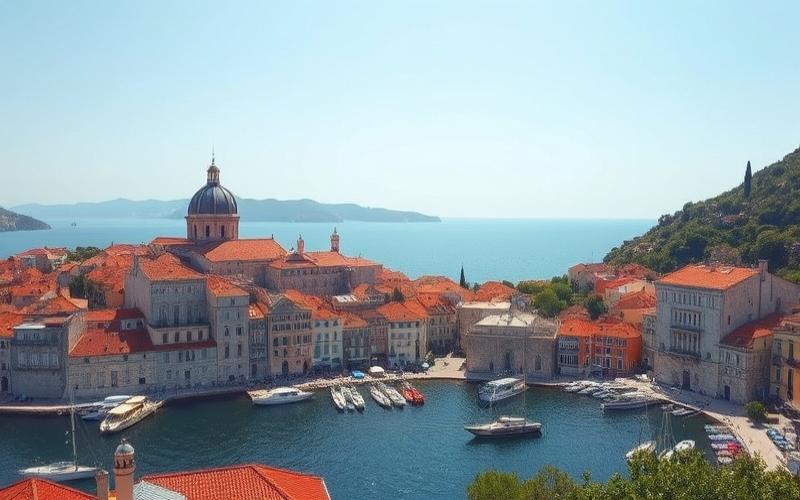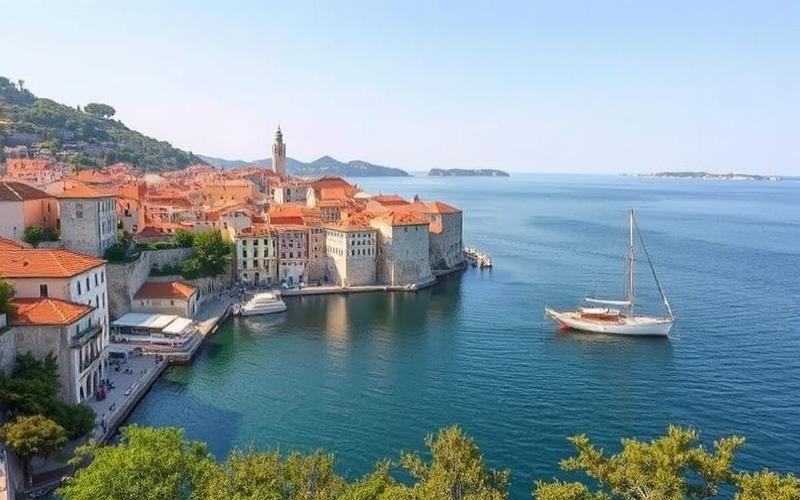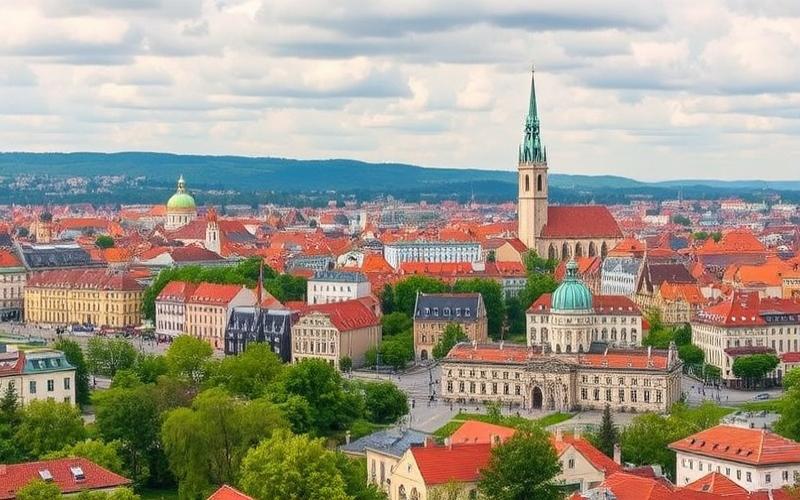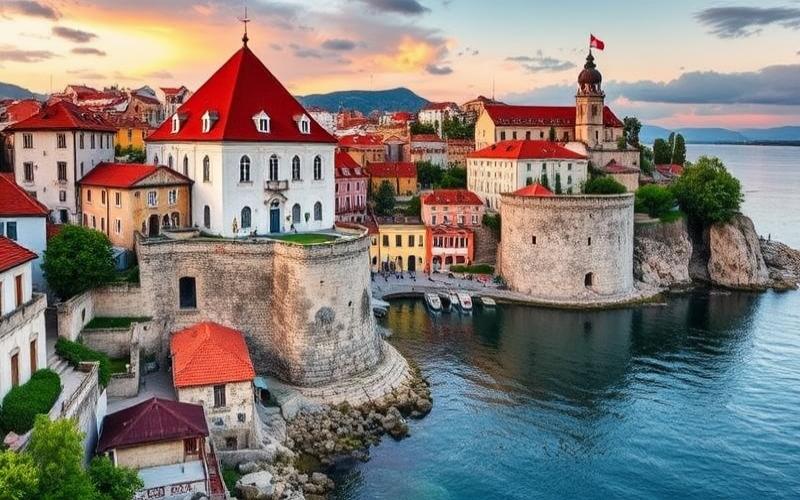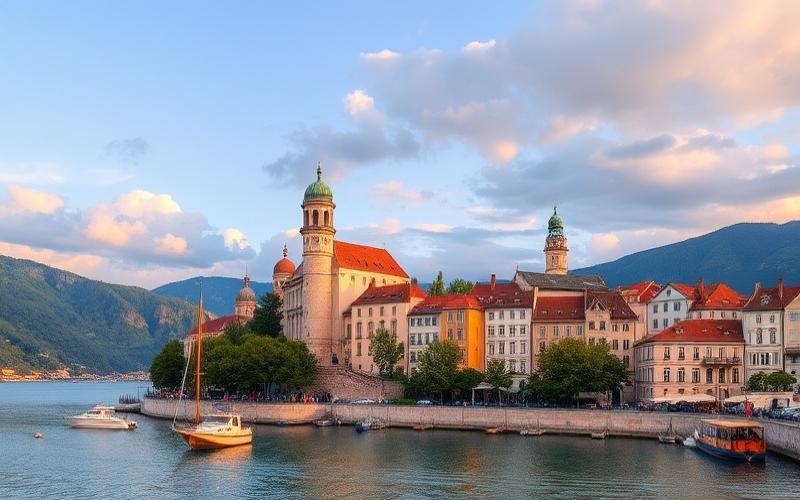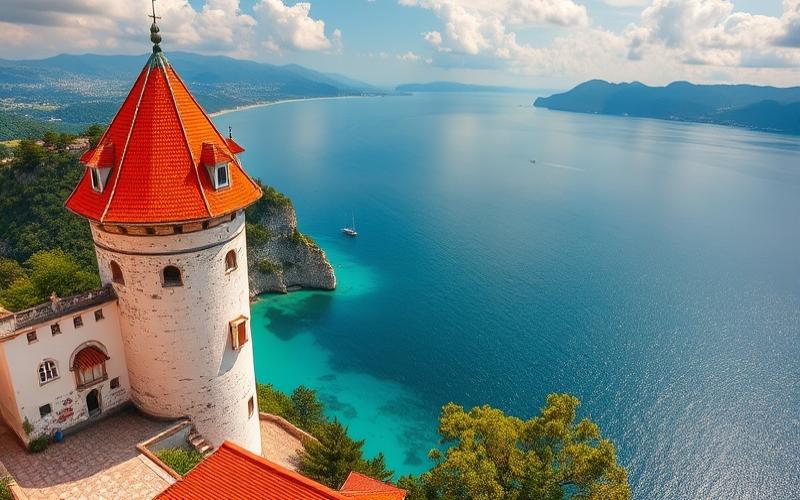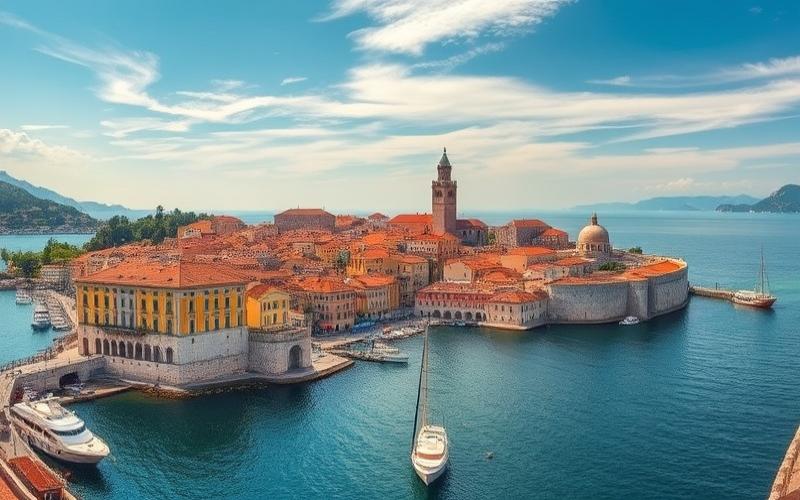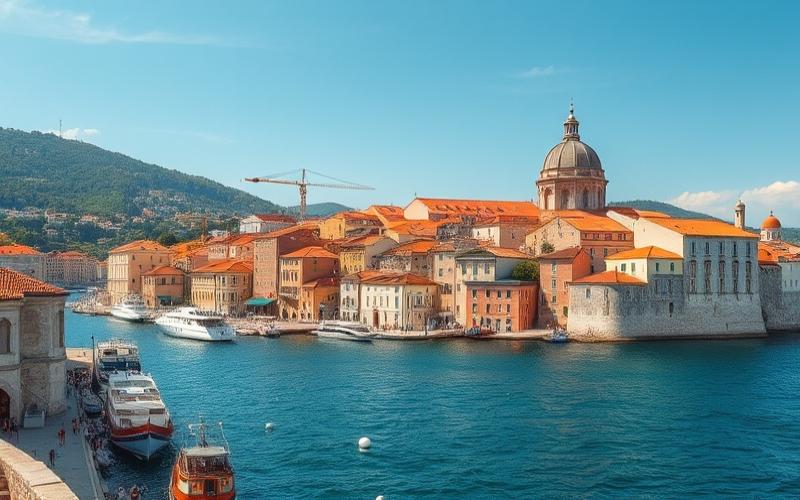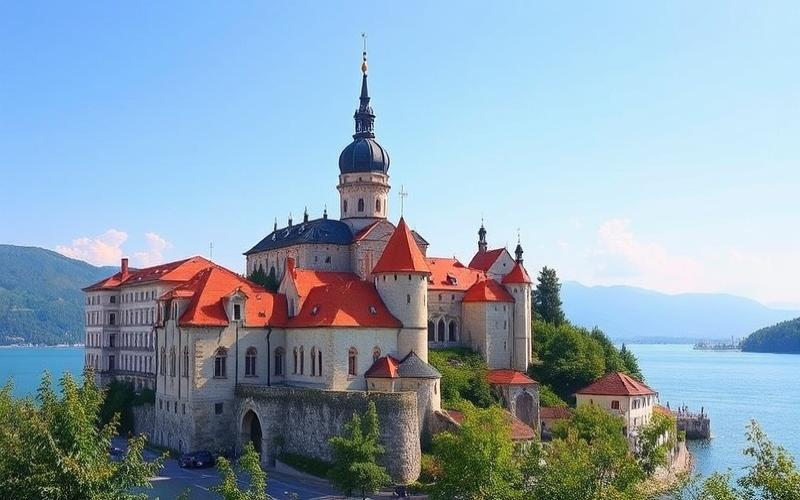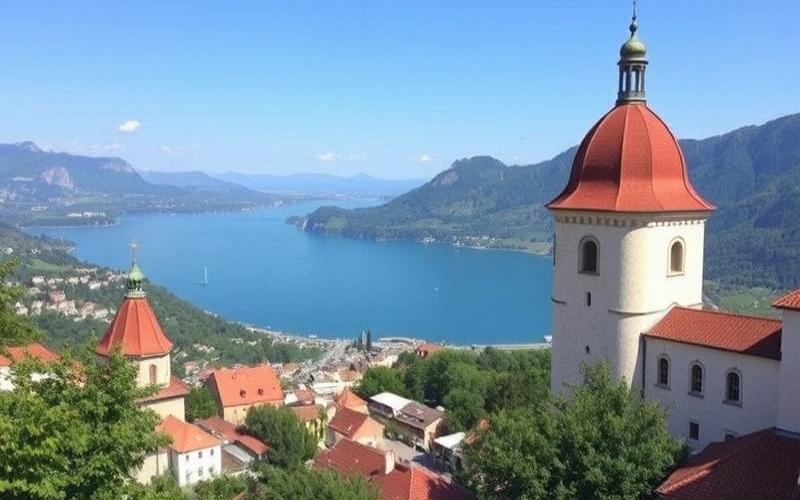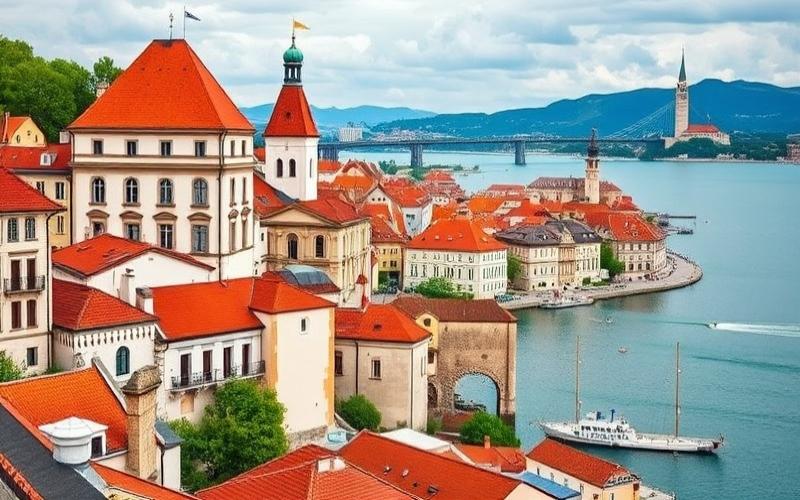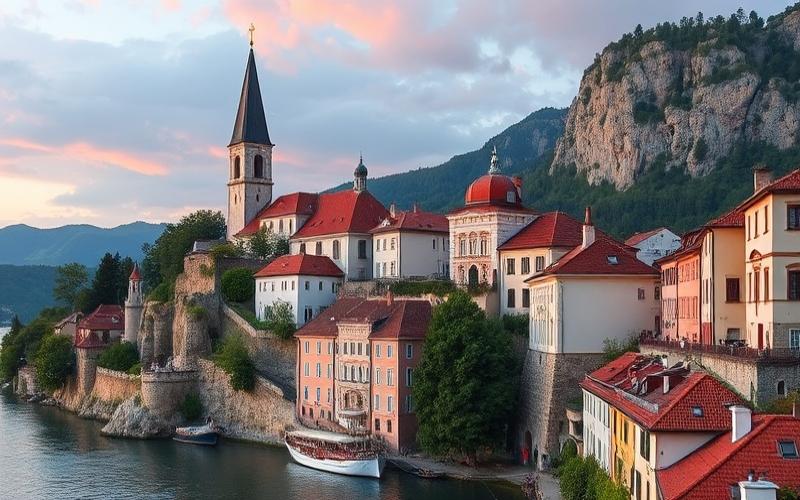
 Published on and written by Cyril Jarnias
Published on and written by Cyril Jarnias
Green Real Estate in Croatia: A Priority for 2025
In Croatia, green real estate is rising to the forefront of environmental and economic priorities for the future. As the country prepares for 2025, it is implementing rigorous and innovative standards designed to transform the sector, integrating sustainable technologies and advanced energy strategies.
Good to Know:
The Croatian government offers attractive subsidies to encourage investors and developers to adopt eco-friendly practices.
This combination of opportunities creates a dynamic landscape that attracts the attention of real estate players keen to adapt to an evolving market.
Green Building Standards in Croatia
Green building standards in Croatia are rapidly evolving to meet the ecological transition objectives set by the European Union, with a notable acceleration of regulations and initiatives by 2025. These measures aim to strengthen the sustainability of the real estate sector, reduce carbon footprint, and improve resource management in construction.
Main Green Building Regulations in Effect or Planned by 2025:
- Compliance with European requirements on energy efficiency and building energy renovation.
- Adoption of new skills and training programs for sector professionals to integrate sustainable construction principles.
- Mandatory modernization of energy networks in new real estate projects.
- Support for widespread adoption of renewable energy sources (solar, biomass) to power residential and commercial buildings.
Essential Criteria for Obtaining Green Certification:
- Efficient energy use (low-energy buildings, smart home automation systems).
- Mandatory or strongly recommended use of sustainable materials (FSC/PEFC certified wood, recycled concrete, bio-based insulation).
- Rigorous waste management on construction sites: systematic selective sorting, maximum valorization according to the “zero waste” principle.
- Systematic integration of water-saving equipment (rainwater harvesting systems, dual-flush systems).
| Criterion | Minimum Requirement | Concrete Examples |
|---|---|---|
| Energy Efficiency | Renovation to Class A | Solar installation |
| Sustainable Materials | European or local label required | Certified wood |
| Waste Management | ≥80% sorted and valorized | Recycling platforms |
| Water | ≥30% consumption reduction | Recovery systems |
Croatian Responsible Bodies:
- Croatian Ministry of Environmental Protection and Green Transition
- Croatian Environmental Protection and Energy Efficiency Fund (FZOEU)
These bodies ensure compliance with standards through regular audits and issue corresponding certifications.
Recent Initiatives Aiming for Harmonization with European/International Standards:
Croatia has relied since 2024 on the reformed European framework from EU Regulation 2024/1263. Funding primarily comes from the Competitiveness & Cohesion 2021–2027 program as well as the Croatian National Recovery and Resilience Plan. Public calls are launched annually so that both private and public developers can directly benefit from European funds dedicated to energy renovation or green infrastructure.
Concrete Examples Illustrating These Standards:
- Comprehensive eco-responsible renovation carried out on several urban drinking water networks in partnership with EIB; significant improvement in access to clean water while drastically reducing pollutant discharge into the Adriatic Sea.
This project not only ensured regular supply but also a clear qualitative improvement through modern tertiary treatment stations meeting strict ecological criteria.
Good to Know:
Green building standards in Croatia, highlighted by 2025, focus on energy efficiency, use of sustainable materials, and responsible management of construction waste. Buildings must meet criteria to obtain green certification, supervised by the Croatian Ministry of Construction and Physical Planning, in cooperation with local bodies like the Croatian Green Building Council. Recent national initiatives seek to harmonize these standards with European directives, promoting projects such as the Zagreb eco-district, which integrates solar systems and materials from renewable resources. These efforts reflect Croatia’s commitment to sustainable construction aligned with international standards.
Croatia is heavily investing in its green transition with over €652 million allocated starting in 2025, a significant portion dedicated to eco-built real estate projects. The focus is on both residential and public infrastructure to ensure every new construction fully meets these demanding standards.
In summary, any new construction or major renovation must demonstrate a high level of certified energy efficiency according to updated European benchmarks; prioritize the use of bio-based/recycled materials; guarantee a high waste valorization rate; integrate equipment limiting water/energy consumption; under direct control of the competent ministry supported by FZOEU. These efforts are financially supported by various European programs ensuring full alignment with recognized international directives.
Subsidies for Renewable Energy in Croatia
Government subsidies in Croatia for renewable energy in the real estate sector are based on an ambitious national strategy aiming to increase the share of renewables to 36.4% of the energy mix by 2030. Several financial and regulatory instruments encourage the development of solar, wind, and biomass projects, with recent priority given to solar, which dominates new installed capacity in 2025.
Main Available Subsidies and Support
- Preferential loans through the Croatian Bank for Reconstruction and Development (HBOR).
- Direct grants for construction and renovation of buildings integrating renewable energy installations.
- Tax incentives and exemptions for investments in green technologies.
- European funding through the REPowerEU plan and the National Energy and Climate Plan, including funds for energy efficiency and electric charging infrastructure.
- Specific project calls, for example for the construction of hydrogen refueling stations for the transport sector, funded by the National Recovery and Resilience Plan.
Recent Initiatives (2024-2025)
- Launch of new subsidy calls for the construction of hydrogen refueling stations (budget of €15 million for six stations to be built by end of June 2026).
- Revision and strengthening of the legislative framework to facilitate the construction of renewable installations on public land and accelerate permit issuance.
- Strong support for solar projects, with installed capacity exceeding 1.1 GW in 2025, solar representing 97% of new capacity connected in the first half of 2025.
Main Subsidized Renewable Energy Types
| Energy Type | Financial Support | Recent Growth (2025) |
| Solar | Very High | +105.2 MW in Q2 2025 |
| Wind | Moderate | Moderate growth share |
| Biomass/Biogas | Limited | Few new projects |
| Hydrogen | Specific | Targeted project calls |
Integration into Legislative Framework and Real Estate Standards
- The Renewable Energy and High-Efficiency Cogeneration Act facilitates the production and consumption of green electricity and defines criteria for subsidy access.
- New constructions must meet energy performance standards, with bonuses for renewable energy integration (solar panels, heat pumps, etc.).
- Green real estate projects are prioritized for access to European and national funds.
Potential Impact on Real Estate Market
- Increased value of properties integrating renewable energy.
- Stimulation of the sustainable construction and energy renovation sector.
- Reduction of the real estate portfolio’s carbon footprint, aligned with European and national objectives.
Eligibility Criteria and Procedures
- Developers and owners must present a project compliant with national technical and environmental requirements.
- Submission of an application to the development bank or through government platforms dedicated to project calls.
- Compliance with current quotas for certain technologies (e.g., quotas reached for wind and solar, access still possible for biomass and hydrogen).
- Mandatory grid connection and certification of installations according to Croatian and European standards.
Procedure Summary
- Identify the appropriate subsidy program (national, European, local).
- Prepare a detailed technical and financial dossier.
- Submit the application within project call deadlines.
- Comply with post-implementation compliance audits and controls.
Key Takeaways
Solar is currently the main beneficiary of subsidies, followed by wind and, to a lesser extent, biomass and hydrogen. Government and European measures promote the emergence of green real estate, which carries value and aligns with Croatia’s climate goals.
Good to Know:
In Croatia, government subsidies for renewable energy in the real estate sector primarily target solar, wind, and biomass, reflecting a strong commitment to sustainable development. By 2025, the government has intensified its initiatives to reduce the national carbon footprint, relying on a legislative framework supporting environmentally friendly construction. Real estate developers and owners can access these subsidies by meeting certain eligibility criteria, including projects aligned with current green real estate standards. For example, solar projects benefit from tax credits and preferential financing, positively influencing the growth of new eco-friendly constructions and encouraging energy renovation of existing buildings, thus gradually transforming the Croatian real estate market into a more sustainable and innovative model.
Understanding BREEAM Certification in Croatia
BREEAM certification plays a central role in the development of green real estate in Croatia, as it constitutes an internationally recognized standard for assessing the environmental performance and sustainability of buildings. Its adoption allows Croatian projects to align with European and global best practices, thereby enhancing their attractiveness to investors sensitive to ecological issues.
Main BREEAM Assessment Criteria:
- Overall pollution level (harmful emissions, noise/light pollution)
- Use of sustainable and clean energy
- Innovative technologies for construction and energy management
- Selection of eco-responsible materials
- Maintenance or development of site biodiversity
- Rational management of water consumption/discharge
- Advanced systems for recycling (water, waste) and energy storage
Each criterion is weighted according to its importance; obtaining the label depends on the cumulative score across different themes.
| Theme | Example of Specific Requirement | Weighting |
|---|---|---|
| Energy | Solar installation/HVAC optimization | High |
| Water | Consumption reduction/stormwater management | Medium |
| Materials | FSC certification/recycling | Variable |
| Biodiversity | Greening/green roofs | Medium |
Benefits Offered by BREEAM:
- Significant improvement in property value (+10 to 30% depending on level achieved)
- Reduction in energy costs through optimized design
- Enhanced comfort and well-being of occupants
- Competitive differentiation in the European market
Croatian BREEAM Certified Examples:
Zagreb Tower (Very Good level)
Achieved objectives:
- Energy optimization through smart geothermal systems.
- Reduction of CO₂ emissions.
- Harmonious integration into the urban landscape.
Green City Center Split
- Advanced sustainable water management systems.
- Local materials with low carbon impact.
- Green roofs promoting urban biodiversity.
Targeted Environmental Objectives:
- Minimize overall carbon footprint.
- Achieve or exceed EU energy efficiency standards.
- Actively support urban ecological resilience.
Sought Economic Objectives:
- Sustainably enhance real estate assets.
- Reduce operational costs (energy/water).
- Attract institutional investors concerned with CSR/sustainability.
Government Subsidies and Incentives Available Until 2025:
Indicative list:
- Direct subsidy of up to 20% of total invested cost, intended for new constructions aiming for a “Very Good” or higher label.
- Partial property tax exemption for five years for buildings certified at “Excellent” level or higher.
- Preferential green loans granted by government partner banks with reduced rates for validated BREEAM projects.
These measures fully align with Croatian national objectives:
Strategic alignment:
Croatia aims for an overall reduction in carbon emissions in accordance with the European Green Deal (-55% before the end of the decade), while actively promoting the circular economy and technological innovation applied to the green real estate sector. Public policies thus strongly encourage all real estate developers seeking to obtain BREEAM certification – simultaneously accelerating the national ecological transition, international economic attractiveness, and urban environmental quality.
Good to Know:
BREEAM certification in Croatia plays a crucial role in the development of green real estate, assessing projects according to specific criteria such as energy efficiency, use of sustainable materials, and impact on biodiversity. Projects like the Arena Centar shopping mall in Zagreb have already obtained this certification, demonstrating ambitious goals for energy performance and ecological integration. Developers seeking certification can benefit from significant government subsidies until 2025, supporting national sustainability and carbon emission reduction objectives. These incentives align with the Croatian plan to stimulate greener construction, thereby supporting the transition to a low-carbon economy while offering a competitive advantage to certified projects in the market.
Disclaimer: The information provided on this website is for informational purposes only and does not constitute financial, legal, or professional advice. We encourage you to consult qualified experts before making any investment, real estate, or expatriation decisions. Although we strive to maintain up-to-date and accurate information, we do not guarantee the completeness, accuracy, or timeliness of the proposed content. As investment and expatriation involve risks, we disclaim any liability for potential losses or damages arising from the use of this site. Your use of this site confirms your acceptance of these terms and your understanding of the associated risks.


